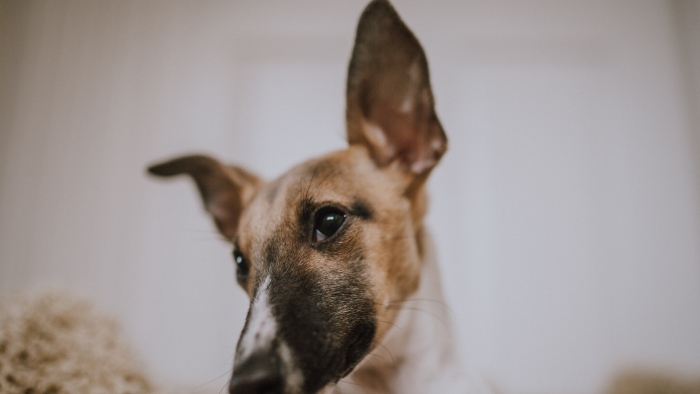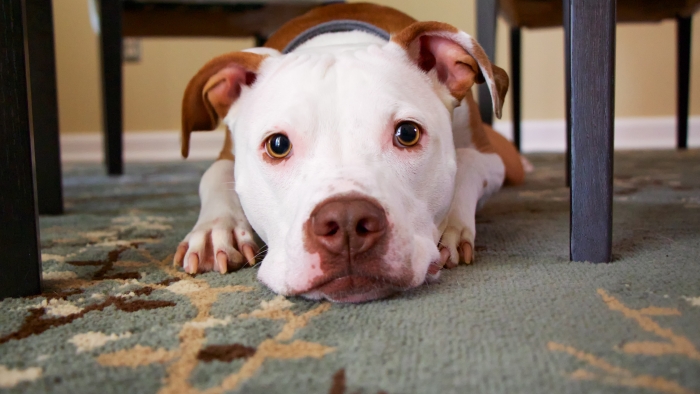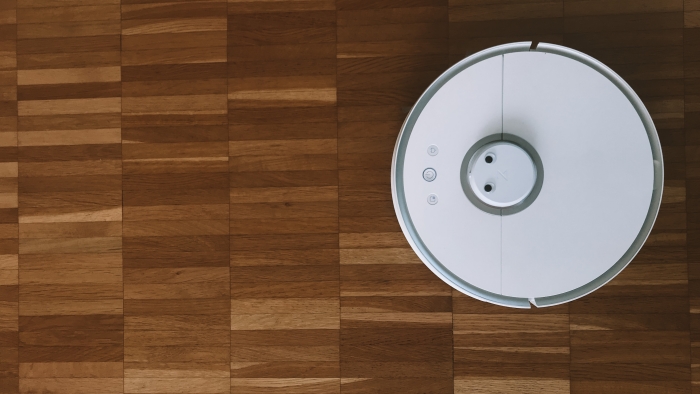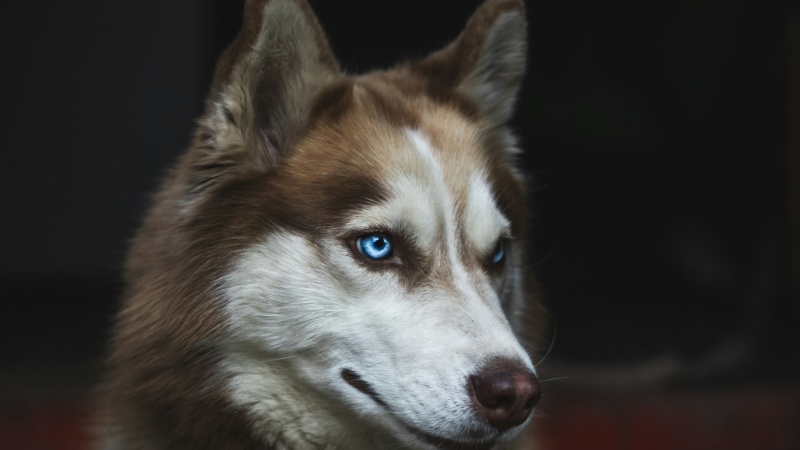
Best Doggie Doorbell:15+ Models Tested for Potty Training
Are you training your doggie doorbell manners, or does your furry friend incessantly scratch or bark at the door to go outside? You need a

Sounds that make dogs go crazy illustrate their exceptional auditory abilities, far surpassing human hearing. Remarkably, they can detect a human heartbeat from fifteen feet away. This means your canine friend likely hears your heartbeat if they’re in the same room. Quite extraordinary, isn’t it?

Yet, while dogs are attuned to a wide range of sounds in their environment, certain noises trigger a more heightened response.
Dogs, with their acute sensitivity to sound, find loud noises generally distressing. However, it’s the sounds around 25,000 hertz that particularly bother them.
As these sounds intensify, your dog’s discomfort increases. Sound waves at this frequency challenge a dog’s hearing more than they do for humans.
These high-pitched noises, often emitted by household appliances, can cause your dog to whine, tremble, or simply exit the room.
Indeed, many dogs are not merely sensitive to certain noises; they develop phobias. Puppies, particularly impressionable in their early weeks, can develop lifelong fears from a single loud noise experienced during this period.
For example, a dog might become terrified every time you use the blender if they had aa frightening encounter with one as a puppy.
If your dog is sensitive to specific sounds, it’s crucial to avoid exposing them to these noises without associating them with something positive. For instance, if your dog is scared of the doorbell, arrange for a friend to ring it and then give your dog a treat.
Pro Tip: When raising a young puppy, it’s advisable to expose them to a variety of sounds between twelve and fourteen weeks old, as this is when they are most receptive to new experiences.
Recognizing how your dog reacts to certain sounds is vital for helping both you and your pet manage these stress-induced behaviors. Look for these signs that might suggest your dog suffers from a noise phobia:
Also, pay attention to more subtle body language cues like pinned ears, frequent lip licking, or dilated pupils, as these can indicate distress.
In severe cases, the urge to escape the distressing noise could lead to your dog injuring themselves or even you.

Thunder is a major stressor for dogs, with about a third experiencing anxiety during thunderstorms. It’s not just the thunder’s roar; it’s a mix of sensory challenges. The scent of rain, shifts in barometric pressure, and changes in lighting all contribute to unsettling your dog.
Firecrackers are immensely distressing for dogs, akin to how war veterans with PTSD react. Dogs are disoriented by the erratic flashes of light and the sudden, loud bangs.
The anxiety can be so intense that dogs might damage their crates and harm themselves in a state of panic and disorientation.
The issue with vacuum cleaners isn’t just their noise, which resembles a roaring tornado to a dog, but also their erratic movement. This unpredictability, combined with the loud noise, makes vacuums seem like an invasive threat to dogs.

A great way to help your dog cope with the vacuum is to engage them with an exercise toy like Runball, which helps burn off their excess energy.
The loud, jarring noises of buses and garbage trucks, including the screeching of metal and beeping sounds, can be overwhelming for dogs. These vehicles also emit high-pitched noises inaudible to humans, adding to a dog’s stress.
The sound of a baby’s cry, with its high pitch, can be distressing not just to humans but to dogs as well. Many dogs are troubled by these sounds, and they may also become anxious seeing their favorite human distressed.
The cacophony of noises at construction sites, from drilling and sawing to the beeping of heavy machinery, can be quite intimidating for dogs. Even those not typically sensitive to noise may find construction zones unsettling.
The loud and jarring noise of car alarms, often in the painful range of sound frequency for dogs, can drive them to distress.
The high-pitched wails of emergency vehicles like fire trucks and police cars can alarm dogs. It’s not uncommon for dogs to howl or bark in response, which, while seemingly cute, is often a sign of their anxiety.
Dogs, relying on both sight and hearing, may find jet airplanes intriguing yet frightening, especially if located near an airport. When traveling with a dog, sedatives might be necessary to ease their anxiety during the journey.
Air conditioners and furnaces, while providing comfort to humans, can cause anxiety in noise-sensitive dogs. The sound of these units, particularly if loud, can be a source of stress for them.
Sounds that make dogs go crazy are a testament to their heightened sensitivity and exceptional hearing, surpassing human capabilities.
Dogs, naturally curious, may react with fear or anxiety to unfamiliar noises. Ensuring your pet is well-socialized is crucial to help them stay calm and confident in new environments.
Should your dog show signs of distress in response to loud sounds, consulting with your veterinarian about coping strategies is advisable.
FAQ 1: Can certain breeds of dogs be more prone to noise phobias than others?
Yes, some dog breeds are more sensitive to noise. Breeds with a high level of alertness or those bred for protective purposes may be more susceptible to noise phobias.
FAQ 2: Are there any specific training methods to help dogs overcome their fear of loud noises?
Desensitization and counterconditioning are effective training methods. These involve gradually exposing the dog to the feared sound at a low volume and rewarding calm behavior, gradually increasing the volume over time.
FAQ 3: How do I know if my dog’s reaction to noise is normal or a sign of a phobia?
A normal reaction might be temporary alertness or curiosity. A phobia is indicated by prolonged or intense responses like panic, prolonged hiding, or destructive behavior.
FAQ 4: Can playing music or using white noise machines help soothe a dog’s anxiety from loud noises?
Yes, playing calming music or using a white noise machine can help mask the distressing noises and soothe a dog’s anxiety.
FAQ 5: Are dog doorbells a good idea for dogs with noise sensitivity? How can they help?
Dog doorbells, which often emit gentler and more controlled sounds, can be a good alternative for noise-sensitive dogs. They can be trained to use these bells for communication, thereby reducing unexpected loud noises like traditional doorbells.


Are you training your doggie doorbell manners, or does your furry friend incessantly scratch or bark at the door to go outside? You need a

When it comes to dog pee, much like humans, the urine of animals is a vital health indicator. Just as human urine reveals a lot

Noticed your dog yawn more often than usual? While it’s adorable, it could also be a sign of something to consider if it appears excessive.

Wondering what’s so fantastic about bell train a dog? Picture a world where your furry friend always alerts you when they need to go outside,

Are you training your doggie doorbell manners, or does your furry friend incessantly scratch or bark at the door to go outside? You need a

When it comes to dog pee, much like humans, the urine of animals is a vital health indicator. Just as human urine reveals a lot

Noticed your dog yawn more often than usual? While it’s adorable, it could also be a sign of something to consider if it appears excessive.

Wondering what’s so fantastic about bell train a dog? Picture a world where your furry friend always alerts you when they need to go outside,
Copyright © 2024 doggydogdoorbell. All Rights Reserved.